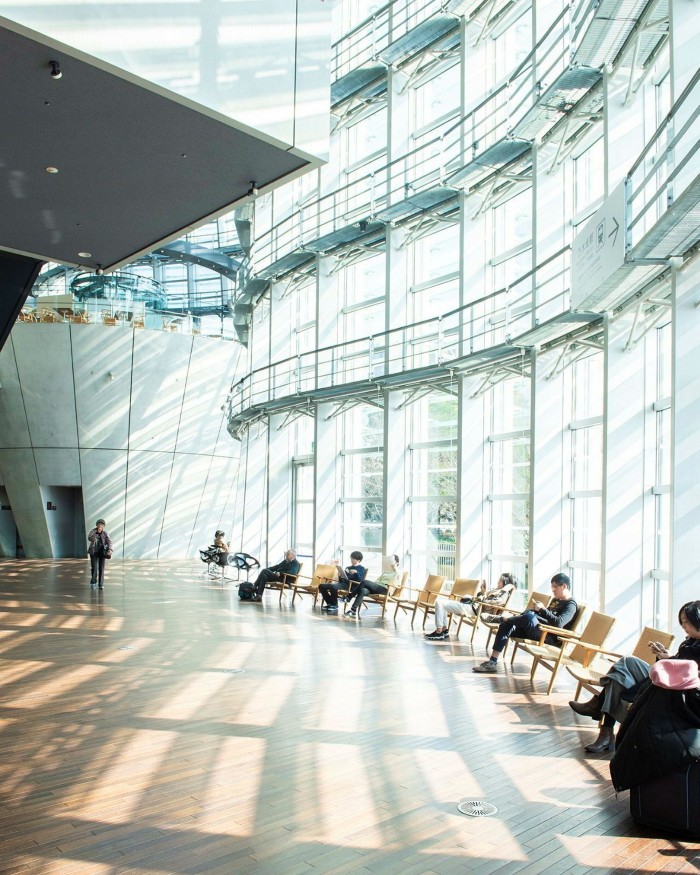Gallerist Atsuko Ninagawa on how to navigate Tokyo’s art scene

Unlock the Editor’s Digest for free
Roula Khalaf, Editor of the FT, selects her favourite stories in this weekly newsletter.
This article is part of FT Globetrotter’s guide to Tokyo
Tokyo’s art scene is vast and sprawling. It spans a wide array of public and private institutions, commercial galleries and alternative art spaces, scattered across the metropolitan area. Exploring it all can be daunting. We founded Art Week Tokyo to make the city’s cultural offerings more accessible to both local and international audiences. At the same time, one of the enduring charms of the city is that navigating its labyrinthine streets often leads to serendipitous encounters and unlooked-for discoveries.
The best way to get oriented is by visiting Tokyo’s flagship museums. For a crash course in Japanese art history, head first to the National Museum of Modern Art, Tokyo, located across from the Imperial Palace. The collection starts in the late 19th century, when Japanese artists began translating Western art techniques and practices to the local context. In the funky Kiyosumi-Shirakawa neighbourhood of small shops and food spots, the Museum of Contemporary Art Tokyo (MOT) then picks up the thread in the 1920s — a heady time for transnational artistic experimentation — and continues through to cutting-edge multimedia works.


The Roppongi district might be best known for its buzzing nightlife, but it’s also home to some excellent museums. The Kisho Kurokawa-designed National Art Center, Tokyo is an eye-catching work of architecture, with a really broad and eccentric range of programming, while the privately founded Mori Art Museum crowns a 54-storey tower. The sky-high space has its finger on the pulse of current trends; as well as organising blockbuster exhibitions of global art stars such as Yayoi Kusama and Louise Bourgeois, it hosts Roppongi Crossing, a triennial survey of Japanese contemporary art.

Corporately sponsored venues also play a vital role in Tokyo’s art ecosystem, and two of the most significant are located in the bustling commercial area of Ginza. Shiseido Gallery was founded in 1919 by the artistic scion of the Shiseido cosmetics brand, and is located in the basement of one of its main buildings. It showcases emerging artists through its annual Art Egg exhibition series, while sophisticated treats are on offer at several Shiseido-branded restaurants on the floors above. A short walk away, Ginza Maison Hermès Le Forum typically features site-specific projects made in response to Renzo Piano’s stunning glass-brick building. The current show (which runs until January 13) is by Rei Naito — whole ephemeral installations are made out of bits of thread and miniature glass baubles.


All kinds of art-adjacent museums and archives provide fascinating glimpses into Japan’s cultural heritage. At either end of Komaba Park you’ll find the Museum of Modern Japanese Literature — which also boasts a cosy café, Bundan, its menu inspired by master storytellers such Ryunosuke Akutagawa and Haruki Murakami — and the Japan Folk Crafts Museum, established in 1936 by Soetsu Yanagi, founder of the Mingei movement, and housed in a traditional Japanese building.
For an overdose of contemporary vernacular expression, meanwhile, head over to Nakano Broadway. This ageing, postwar-era shopping centre is where you can browse vintage figurines, toys, manga and other collectibles. Across its several floors there are a number of establishments owned by artist Takashi Murakami, including the retro video game-themed café Coffee Zingaro.

Further afield, the Edo-Tokyo Open-Air Architectural Museum in Koganei Park makes for a fun outing. The museum grounds are dotted with historic buildings by pioneering architects such as Sutemi Horiguchi and Kunio Maekawa, which have been relocated there. At Keio University, meanwhile, the city’s built heritage is honoured through recreation: the Ex-Noguchi Room is a Kengo Kuma-supervised homage to an iconic lounge space that artist Isamu Noguchi made in collaboration with the architect Yoshirō Taniguchi in 1951. It’s only open to the public occasionally, however.

The commercial gallery scene in Tokyo is lively. Galleries are scattered all over the city, from the blue-chip dealer SCAI The Bathhouse in picturesque Yanaka to Misako & Rosen in colourful Otsuka; my own gallery, Take Ninagawa, is located in the shadow of Tokyo Tower. They are complemented by alternative, artist-run spaces, which are grounded in local communities. One of my favourites is Lavender Opener Chair, a modest space in the sleepy backstreets of Arakawa. It taps into both the city’s vibrant history of squats and an international lineage of artist-run eateries, featuring exhibitions during the daytime and then converting into a counter diner at night, where chef-artist Tatsuhiko Togashi’s cooking draws inspiration from his northern, Yamagata roots. This is Tokyo at its best: when it allows for informal exchanges, motivated by a spirit of hospitality and care.
Art Week Tokyo, November 7-10, artweektokyo.com. Atsuko Ninagawa is the owner and director of Tokyo gallery Take Ninagawa
What’s your favourite cultural space in Tokyo? Tell us in the comments below. And follow FT Globetrotter on Instagram at @FTGlobetrotter
Cities with the FT

FT Globetrotter, our insider guides to some of the world’s greatest cities, offers expert advice on eating and drinking, exercise, art and culture — and much more
Find us in Tokyo, Paris, Rome, London, New York, Frankfurt, Singapore, Hong Kong, Miami, Toronto, Madrid, Melbourne, Copenhagen, Zürich, Milan, Vancouver, Edinburgh and Venice
#Gallerist #Atsuko #Ninagawa #navigate #Tokyos #art #scene






